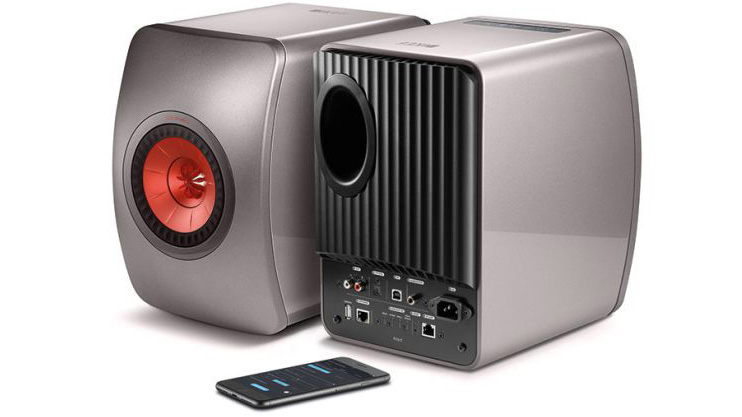What Hi-Fi? Verdict
These KEF Wirelesses are way more than just active versions of the award-winning LS50s. They’re a complete system wrapped in a neat and brilliant package
Pros
- +
Impressive clarity and insight
- +
Taut bass and strong dynamics
- +
Features and excellent build
- +
Neat package
Cons
- -
Some small usability issues
Why you can trust What Hi-Fi?
When someone says the words ‘hi-fi system’, what do you think of? If you’re anything like us, you’ve just pictured a combination of separates comprising source – maybe a streamer, CD player or record player – an amplifier and a pair of speakers.
If we could go back 40 years and ask the same question, we suspect any enthusiast would have given a very similar answer - minus the digital sources, of course.
While hi-fi has certainly improved and been developed over the decades, on a fundamental level, arguably, it’s barely evolved at all.
MORE: 4 of the best hi-fi systems
Video
Active speakers

Active speakers, while nothing new, could be a building block for an alternative solution.
On a purely technical level they have clear performance benefits, and they certainly reduce the box count. But many enthusiasts don’t like the lack of easy upgradability or the low perceived value - active speakers are, inevitably, always far more expensive than their passive relatives due to the cost of the power amplification inside. And, of course, a pair of active speakers only goes so far - you still need to add a preamp and a range of sources too.
But what if you didn’t need to add those extras? Imagine active speakers with preamp functionality; something that includes digital and analogue inputs.
The latest hi-fi, home cinema and tech news, reviews, buying advice and deals, direct to your inbox.
Such a device would certainly need Bluetooth, and perhaps even streaming services such as Tidal built-in. You know what would also be nice? A streamer, so that any music stored on a NAS unit or computer connected to your home network could be replayed.
Such well-equipped active speakers would not only get rid of the clutter of traditional hi-fi but also, if done properly, could potentially deliver a performance broadly equivalent to a similarly priced separates rig.
The good news (as you may have guessed...) is that such a product does now exist: KEF’s LS50 Wireless.
MORE: 10 affordable ways to upgrade your hi-fi system
Build

While we’ve reviewed powered and actives options from the likes of Dynaudio, Dali, Linn and Meridian before, none of them has combined such a wide range of features in such an elegant two-box format.
Those that offer a range of inputs usually add an extra connection hub that transmits the signal wirelessly to the speakers. That’s not the case here. There are just the two fully active speaker boxes, arranged in a master and slave configuration. All sources connect to the right (master) speaker, which is then linked to the left by means of a supplied ethernet cable.
As is usually the case, 'wireless' doesn’t actually mean wireless. While these KEFs are better than most, you still have two mains leads – one for each speaker – and the connecting lead between them. Still, they remain a neater solution for getting high-quality sound into the home than traditional separates.
MORE: How to build the perfect speaker
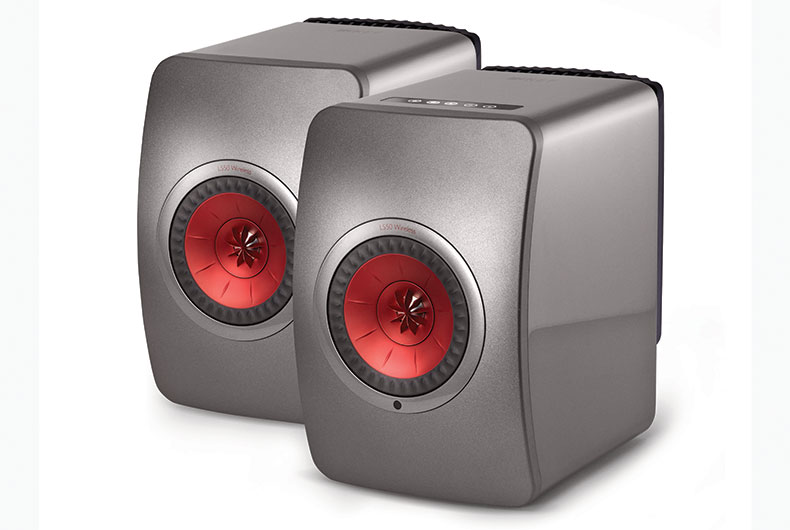
It will come as no surprise to any regular reader that the Award-winning passive LS50s are the basis for this design. The drive units remain unchanged.
These speakers use a Uni-Q array, where the 25mm aluminium dome tweeter sits in the centre of a 13cm magnesium/aluminium mid/bass cone.
This arrangement helps to produce an even dispersion of sound and improves integration between the two drivers. What looks like a grille in front of the tweeter is, in fact, a waveguide that improves its performance.
That beautifully built and finished enclosure is the same as the passive version too, bar a couple of centimetres of additional depth to accommodate the electronics and heatsinking. There are three cabinet options: the Titanium of our review samples, gloss black and gloss white. Each option comes with a contrasting colour on the Uni-Q driver array.
That curved front panel still looks unusual and is made of DMC (Dough Moulding Compound: a polyester resin combined with glass fibre and calcium carbonate). DMC was chosen for its inertness and ability to be shaped.
The rest of the enclosure is made from MDF. It’s heavily braced and strongly damped to minimise any resonances. We don’t tend to talk much about ports, but the one here is unusual in that it’s flexible in a bid to reduce distortion.
MORE: KEF LS50 review
Features
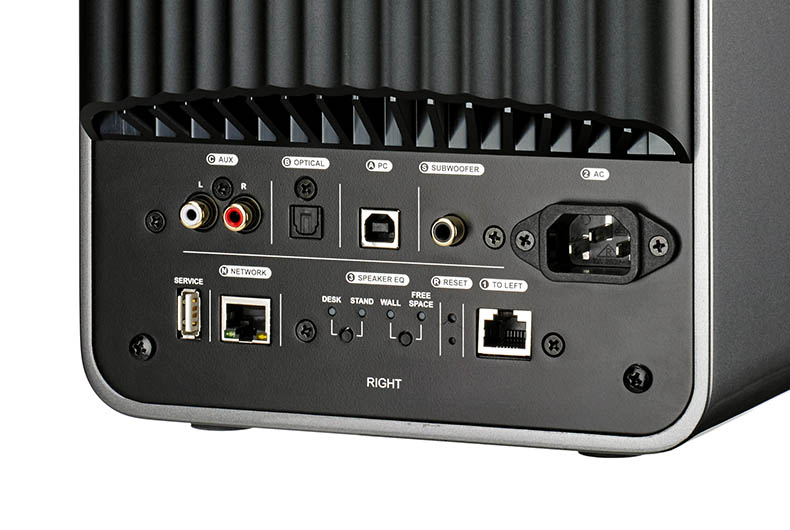
These are true active speakers where each drive unit has a dedicated power amplifier. A 30W Class A/B circuit feeds the tweeter while a 200W Class D module powers the mid/bass unit.
The Class D design was chosen for its combination of high power and low heat output – heat generation is an important consideration in a product as crammed as this.
KEF has taken advantage of the internal DSP by phase correcting the crossover and using the software to allow the speakers to play loud and true while minimising distortion.
The digital signal path is 24-bit/192kHz capable and there’s a dedicated DAC for each drive unit. Only the optical input is limited to 96kHz signals, but that’s not unusual.
Take a look at the back of the right speaker and you’ll find stereo analogue, optical and USB Type B connectors. You’ll also find a subwoofer connection, in case you want to add more low frequency output, and an Ethernet socket for connecting to your network.
MORE: Best hi-fi speakers 2018
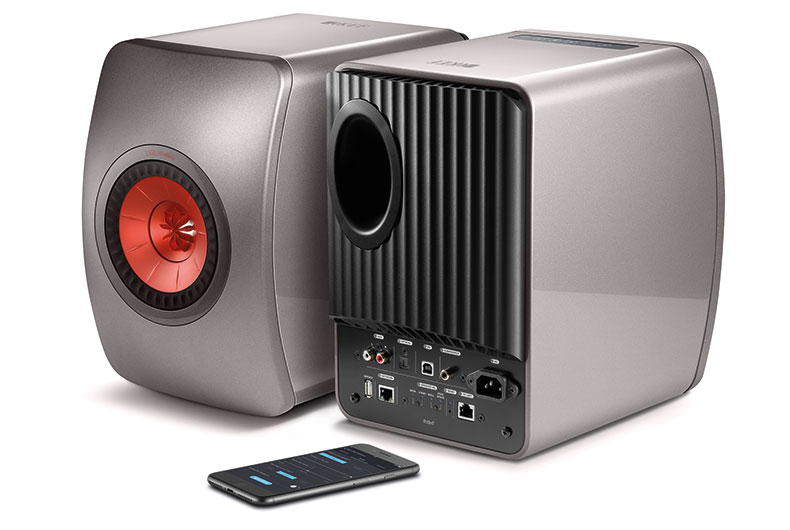
Normally we’d recommend sticking to the wired network option for greater stability but we used the twin-band (2.4gHz/5GHz) wireless option for most of our test without issue.
There are also controls for adjusting the sound for different speaker placements with options for close-to-wall or free space positioning as well as the choice between desk or stand supports. These choices can be made from the dedicated iOS/Android app too.
That app looks nice, is well laid out and easy to use. It controls the streaming (DLNA as well as Tidal) functionality and allows plenty of scope to fine-tune the speaker’s performance in a given environment. There is room for improvement, though. It’s a little glitchy and feels unresponsive at times.
We also don’t like the sliding volume control. It doesn’t change the volume until you lift your finger, so you don’t know how loud the sound is going to be until you hear it. It can shock on occasion.
MORE: Best speaker deals - hi-fi, Bluetooth, wireless
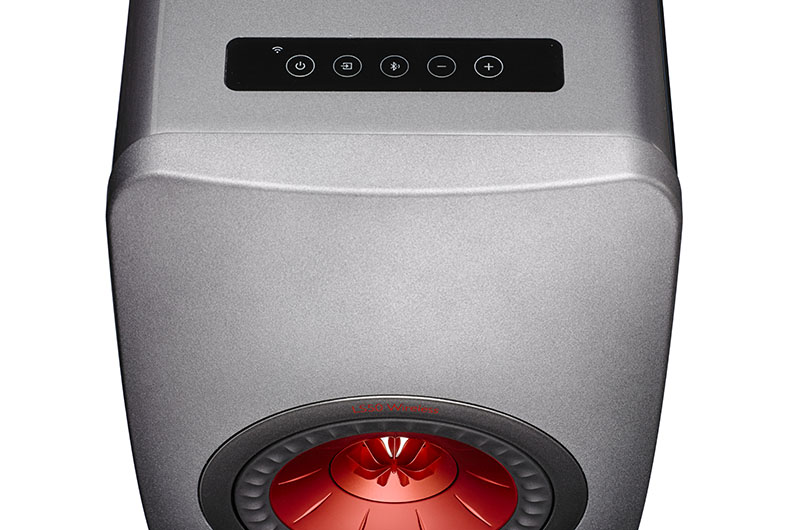
It’s important to note that the app doesn’t switch between physical inputs, as it only operates the KEFs in streaming mode. To change input, you need to use the supplied remote or the touch controls on the master speaker.
This swapping around of controllers gets a little annoying if you switch sources a lot, particularly as the app has to reconnect with the LS50s every time you switch back, rather than just working straight away.
It would also be nice to be able to see an indication of the input chosen when sitting at the listening position – the only indicator is out of sight on the right speaker’s top panel. So if you’re using the remote to change input there’s no way (apart from counting clicks) to know what input the LS50 has settled on.
None of these things are anywhere near serious enough to be deal breakers for us, but they make living with the speakers a fussier experience than it should be. Make no mistake; you will want to live with them.
Why? To our ears they sound at least as good as the best comparably featured separates combinations available for similar money. Remember, here there are no extra electronics to house or cables to hide, just a pair of beautifully built speakers on (ideally) a pair of stands. Neat.
Sound

We start off with Arvo Part’s Tabula Rasa and are deeply impressed by what we hear. The LS50 Wirelesses sound clean and precise. They dig up so much detail and deliver it in an organised and stable manner. We’re struck by the KEF’s subtlety and their ability to generate strong dynamic shifts without stress.
These are small speakers but they manage to fill our medium sized listening room with high volume levels. KEF claims a maximum sound pressure level of 106dB, which should be loud enough for most people in most circumstances.
Positioned with care, a little away from the rear wall and with a touch of toe-in towards the listening position, they render a lovely, expansive soundstage that’s neatly layered and nicely defined.
We try the LS50s in less optimised positions and manage to use the app to make the results sound balanced. They’re never quite as good as the optimal position in terms of outright clarity or stereo imaging, but tonally we still get a balanced presentation.
MORE: How to buy speakers and set them up for the best sound
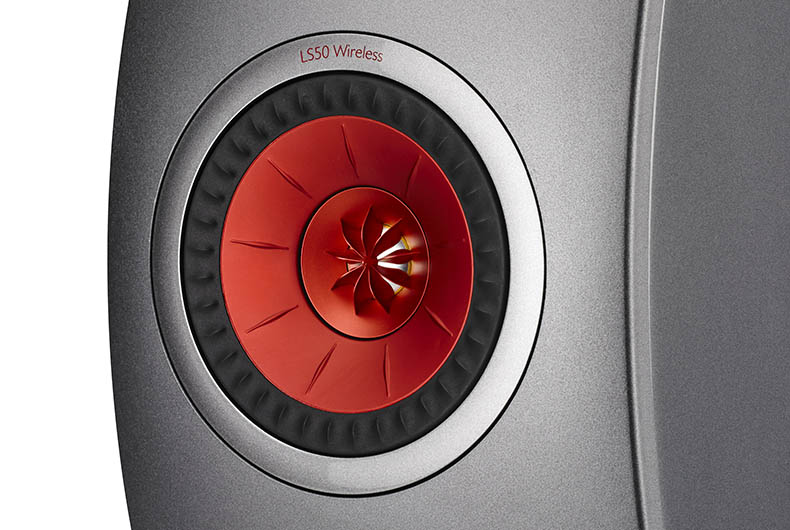
Once set-up properly we think KEF’s engineers have struck a really nice tonal balance. It’s even-handed yet refined enough to make the most of less than optimal recordings or sources.
Moving onto Massive Attack’s Angel shows the LS50’s impressive bass performance. These aren’t big speakers so you won’t get really deep floor shaking bass, but they generate low frequencies that are taut, articulate and punchy.
For a speaker that stands 30cm tall and has a mid/bass unit that’s just 13cm in diameter, it’s an impressive result. The good news continues higher up the range with a transparent and fluid midrange and insightful highs.
Vocals are delivered with passion while percussion comes through with bite and composure.
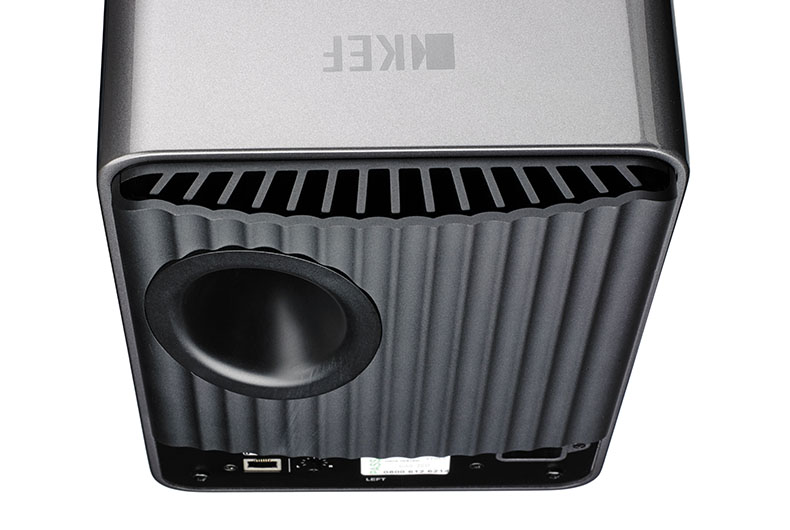
The LS50 Wirelesses are rhythmic too, delivering the song’s unmistakable momentum with determination. They never sound too pushy either, allowing the song’s natural flow to come through.
Overall, these speakers have the insight to unravel a recording yet never go so far as to tear the music apart. They’re informative but always musical with it.
We play a whole range of music from the heartfelt grit of Bruce Springsteen’s Terry’s Song and sparse electronica of xx’s Stars right through to large scale symphonies from the likes of Stravinsky and Beethoven; these speakers take it all in stride. It takes a broad range of talents for this to happen.
MORE: The making of: KEF LS50 Wireless
Verdict
KEF has done a terrific job here. It has taken the award-winning LS50s and made them an even better proposition.
That £2000 price tag looks pretty hefty for such compact speakers, but remember that money also buys you a dedicated streamer, a Bluetooth module, 24-bit/192kHz DAC, preamp and four power amplifiers with a total of 460W of output.
Is this what the hi-fi system of the future should look like? We certainly hope so.
MORE:
See all our KEF reviews
What Hi-Fi?, founded in 1976, is the world's leading independent guide to buying and owning hi-fi and home entertainment products. Our comprehensive tests help you buy the very best for your money, with our advice sections giving you step-by-step information on how to get even more from your music and movies. Everything is tested by our dedicated team of in-house reviewers in our custom-built test rooms in London, Reading and Bath. Our coveted five-star rating and Awards are recognised all over the world as the ultimate seal of approval, so you can buy with absolute confidence.
